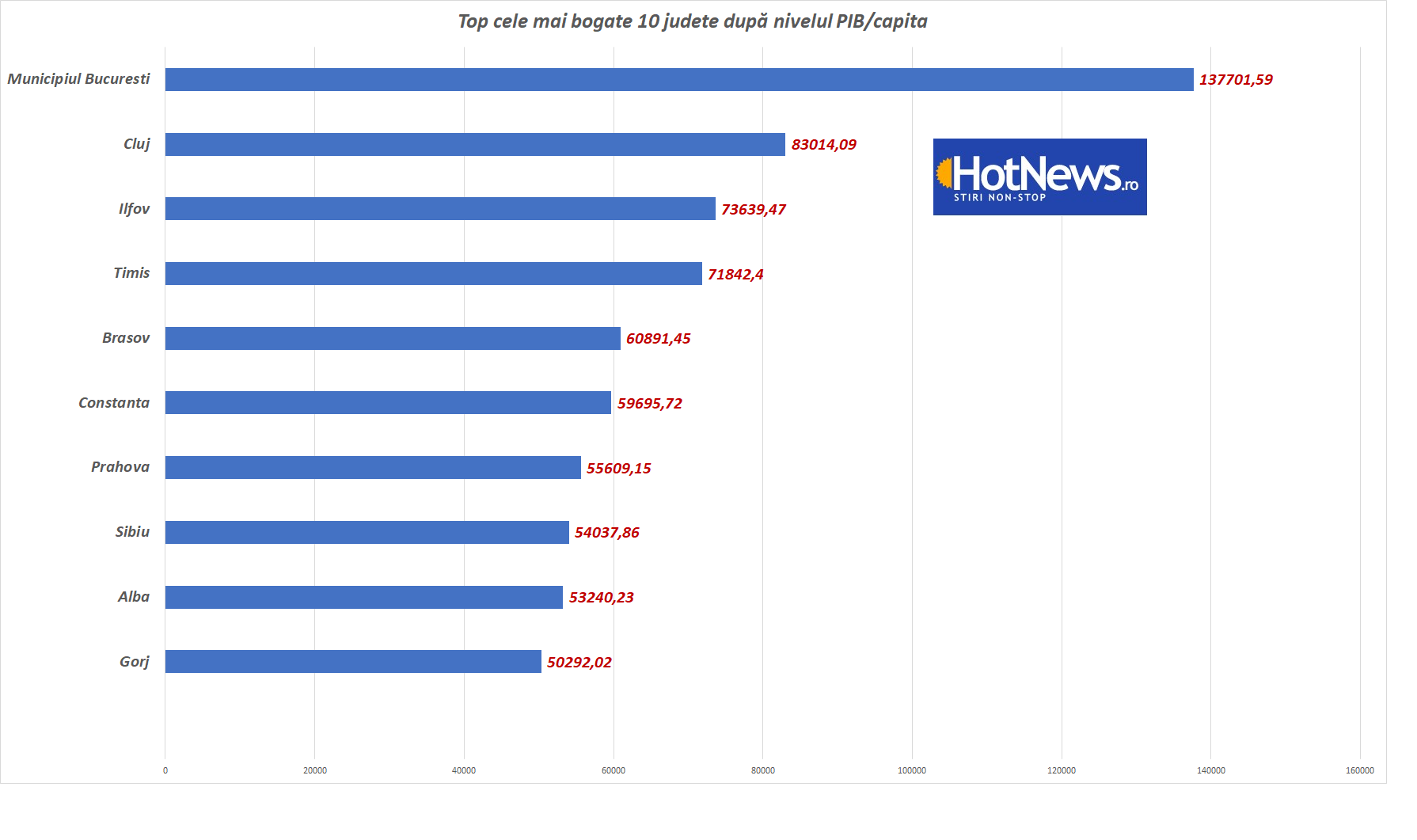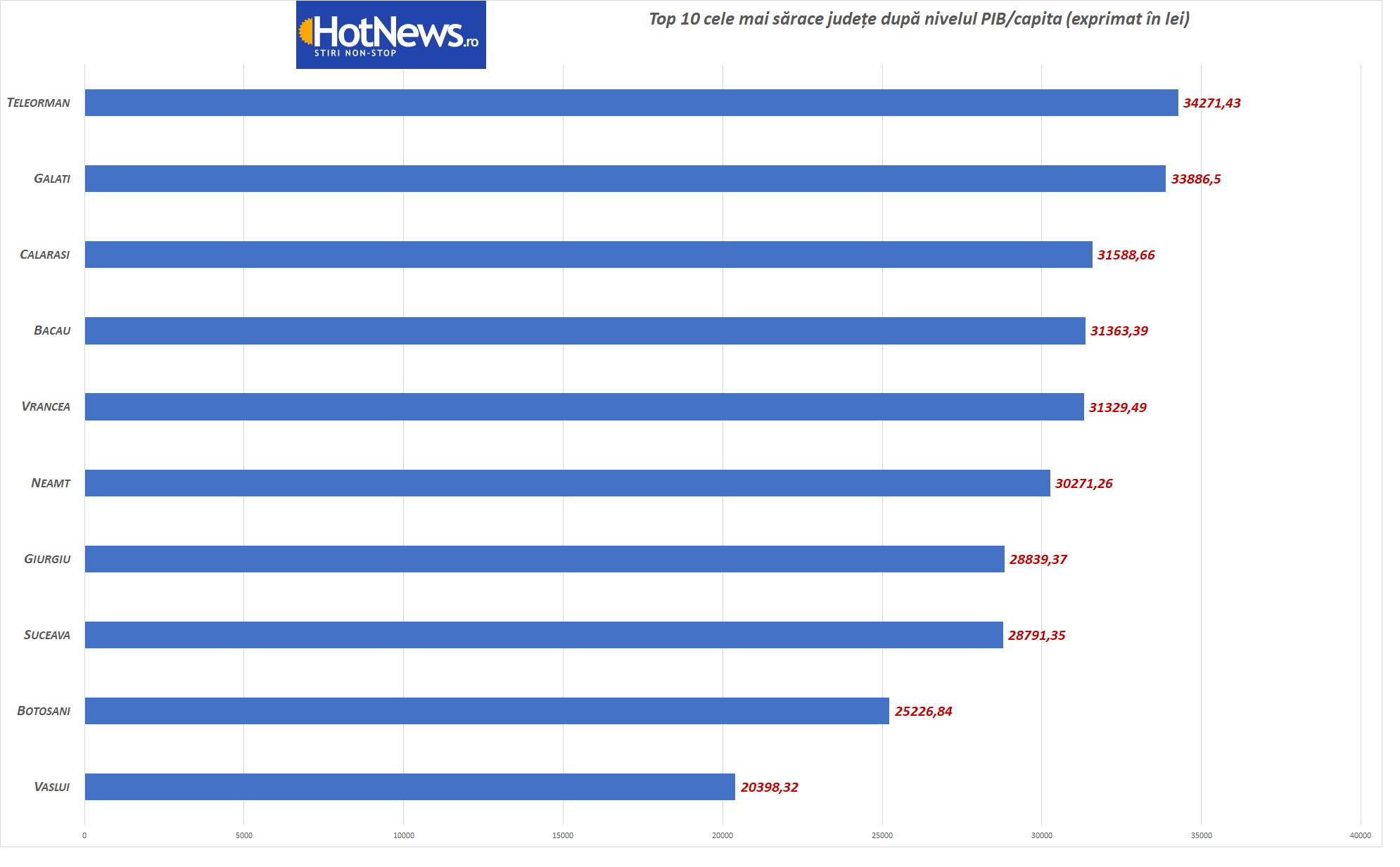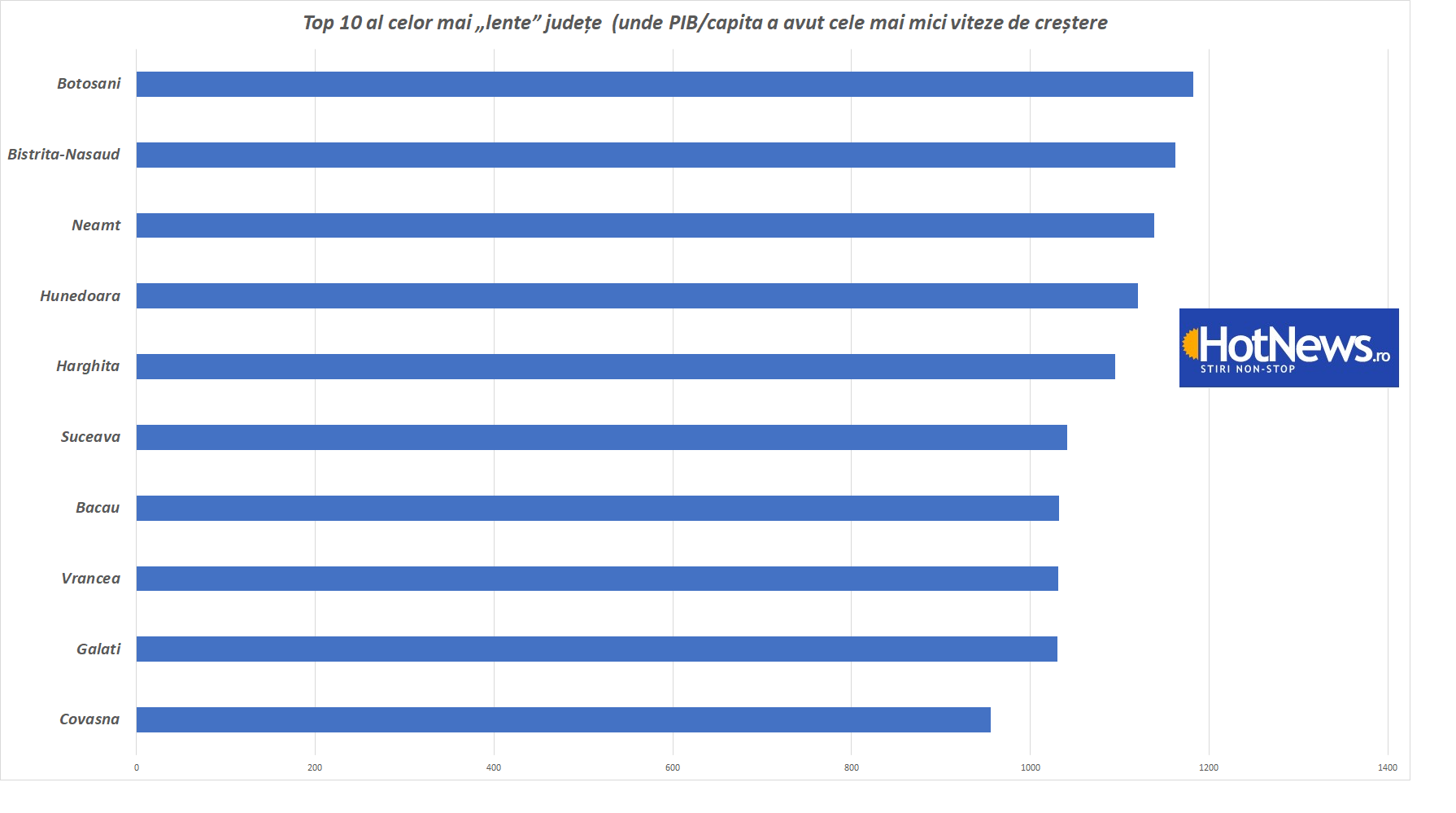
20 years ago, Romania’s GDP per capita at purchasing power parity (PPP) was only 26% of the EU average. GDP per capita at purchasing power parity (PPP) is now 76%, on par with Hungary and higher than Greece (67%), Latvia, Croatia, Slovakia, Serbia and neighboring Bulgaria. But the picture changes dramatically when we delve into the details at the district level.
N. Red: Purchasing power parity – PPC (Purchasing power parity or PPP) measures the purchasing power of a currency expressed in another currency of international circulation, usually euros or dollars. Given that the prices of goods differ from one country to another, purchasing power parity calculates an alternative exchange rate between two countries’ currencies by comparing a “basket of goods” using the formula: S=P1/P2 Where: S = exchange rate between currency 1 and currency 2, P1 = value of goods in currency 1 and P2 = value of goods in currency 2. The purchasing power parity exchange rate is used to compare the standard of living in different countries. This explains why, even though Greece has a higher GDP per capita than Romania, we are better than them in terms of purchasing power parity.
The richest county, which is definitely Bucharest, has more than 260% of the EU average in terms of purchasing power parity (that is, more than 2.5 times richer than the average), but at the other end of the ranking we find the poorest county, Vaslui. almost 7 times poorer than the capital

It should be noted that although Bucharest leads in terms of GDP per capita, followed by Cluj, over the past 20 years the rate of development of Cluj residents has been much higher than that of the capital.
20 years ago, Cluj was in fifth place in terms of GDP per capita, after Bucharest, Ilfov, Constanta and Brasov. In 2010, he overtook Brasov and reached 4th place, and recently he also overtook Ilfov, sitting in the Capital queue.
Covasna, Galați, Vranca and Bacău had the lowest level of development, and Cluj, Bucharest, Salai and Timișoara the highest.

By the way, this ratio is one of the highest in Europe, and if we look at the county level, we will see that over the last 20 years, out of 42 counties, only 15 had a faster GDP per capita growth than the national average. The other 27 had a lower development rate, which worsened their relative location.
We have practically the Romania of extremes

We have the Bucharest-Ilfov region, which on a European scale ranks 14th out of 242 regions according to the NUTS2 classification, with a GDP per capita level of 164% compared to the EU 100 average. This level is higher than regions such as Stuttgart, Vienna, Bremen, Cologne.
On the other hand, we also have the north-eastern region of the country, which is only 46% of the European Union average, at the bottom of the ranking. It ranks 226 out of 242 regions on a European scale, Ionuc Dumitru also said.

It should be noted that Botosani, Salaj, Vaslui, Vranca, Vilca and Teleorman counties have a high fiscal imbalance, dependent on transfers from the state budget to survive, according to a study published by a group of Romanian experts. Otherwise, he said, they are easier to control politically, being dependent on money from Bucharest.
In these counties, transfers are the most important source of funding for county expenditures.
Bucharest is the most autonomous local administration in Romania. Other counties with a tendency to increase local financial autonomy are Arges, Brasov, Cluj, Constanta, Ilfov, Sibiu and Timișoara, especially in recent years, as local authorities have found ways to increase their own revenues (both through better collection and through development programs on based on the development of the business environment).
In terms of own revenues, there are significant differences in the ability of counties to generate their own revenues
The Accounting Chamber of Romania speaks in its reports about unrealistic local budgets, not related to the real needs of the local community or real financial resources.
“There is a weak concern of local public authorities to identify and capitalize income that may arise as a result of the development of economic activities or the capitalization of assets from their public and private heritage,” the Accounting Chamber shows in the latest report
There are counties with a high level of GDP per capita, but with minimal provision of public services (Gorge, Alba), or counties with a low level of GDP per capita, but with a significant level of local government spending (Iasi).
A high level of fiscal responsibility was recorded in Timisoara, Constanta, Cluj, Prahova, Brasov, Bihor and Iasi, the authors of the document also testify.
Source: Hot News
Lori Barajas is an accomplished journalist, known for her insightful and thought-provoking writing on economy. She currently works as a writer at 247 news reel. With a passion for understanding the economy, Lori’s writing delves deep into the financial issues that matter most, providing readers with a unique perspective on current events.